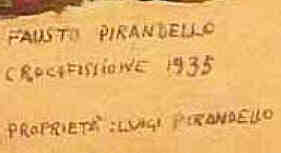—
M.C. Escher, the creator of instantly recognizable, eerily precise renderings
of infinity and logical absurdities, lived a very peaceful life for an artist.
The youngest of three sons, he was born Maurits Cornelis Escher (called
"Mauk" for short) in Leeuwarden, Netherlands, on June 17, 1898. Mauk’s father
was a civil engineer and his mother the daughter of a government minister.
When Mauk was five, his family moved to Arnhem, a more centrally located
city near the German border. In Arnhem, Mauk did terribly in all his high
school classes except for art, where his teacher taught him to make linoleum
cuts -- a technique similar to woodcutting but using pliable, carved linoleum
sheets as the material from which prints are made. His earliest surviving
work from his high school days is a purple linocut of his father, an indication
of the linocuts, woodcuts and mezzotints that would later represent the
major techniques of Escher’s art.
Although Escher failed his high school final
exams and never officially graduated, he pursued further studies at the
Technical College in Delft from 1918 to 1922, and then at the School for
Architecture and Decorative Arts in Haarlem. At Haarlem, Escher had an important
mentor, the artist S. Jessurun de Mesquita, who encouraged Escher to continue
with drawing and woodcutting. At this time, as evidence by illustrations
for Easter Flowers (1921), some of Escher’s favorite themes began
to emerge: mirrors, crystals, and spheres. From 1921 to 1923, Escher concluded
his studies to travel with his family and friends to Italy and Spain. During
this visit, Escher paid his first visit to Alhambra, a Moorish palace in
Grenada with intricate geometric mosaics that fascinated the young artist.
In the spring of 1923, Escher also met a beautiful young woman, Jetta Umiker,
during his travels. By August of the same year, when his first one-man show
opened in Siena, the two were engaged.
The couple married in 1924 and moved to Rome;
they eventually had three sons. Escher’s fame as an artist grew significantly
by this time, and during the next 12 years he exhibited all over Italy,
Switzerland and Holland, mostly producing woodcuts of conventional landscapes
and architectural forms. In 1936, however, a major turning point occurred
in Escher’s artwork — an interest in tessellation. During a second visit
to Alhambra, Escher spent many days sketching the intricate mosaics that
originally fascinating him 14 years prior. These Alhambra tiles are examples
of patterns technically known as "tessellations," arrangements of closed
shapes completely covering a plane without overlapping and without leaving
any gaps. By any combination of reflection (reversal), rotation, or translation
(sliding to the right or left), Escher discovered that any shape based on
a square, hexagon, or triangle could become tessellated. Escher was especially
interested in employing these patterns in the representation of organic
forms (like birds, fish, or reptiles) or in depicting metamorphoses from
one pattern into another (see his 1937 Metamorphosis series). These
themes of tessellation, polyhedra (many-sided shapes), reflections, and
perspective would continue to play center stage in Escher’s artwork for
the next 30 years.
Equally central to Escher’s work is the influence
of mathematics. Discussing this influence, Escher said: "For me it remains
an open question whether [this work] pertains to the realm of mathematics
or of art." Indeed, the presence of complex mathematical concepts in many
of his pieces prompts the viewer to pose the same question. His tessellations
were like elegant demonstrations of theorems that geometry and crystallography
were just beginning to prove. Likewise, his interest in depicting two-dimensional
infinity by shrinking a repeating pattern toward the edges and/or the center
of a composition (Circle
Limit (1959), Snakes (1969)) pays homage to findings in
non-Euclidean geometry. Escher also explored in Mobius
Strip II the brand-new field of topology, the study of the properties
of shapes that remain the same under deformation. Escher also used concepts
published by the mathematician Roger
Penrose, including an impossible staircase and triangle, for many of
his "impossible architecture" prints (e.g., Ascending
and Descending). Using the same concepts from Penrose, he also
created his impossible landscapes, such as Other World (1947),
which played tricks with the artistic technique of perspective, putting
many different, contradictory, and vanishing points in a single composition
so that the eye must constantly revise its interpretation of direction.
No matter what theme Escher explored, all
of this work — whether in woodcut, lithograph, drawing or mezzotint — shows
the technical proficiency honed by years of training. His immense popularity
comes in part from an unusual eye for the whimsical details that attract
even the naive observer. Escher also stands out for his distinctive use
of color, which is used only when necessary to distinguish elements of a
pattern. Equally fascinating are the two main categories of his subjects:
believable impossibilities and bizarre interpretation of reality. Among
the most famous examples of the second type is Escher’s Hand
with Reflecting Sphere, done in January 1935. |
 site safe for children
site safe for children 
 —
Autoritratto
(1938, 49x32cm; 601x388pix, 80kb)
—
Autoritratto
(1938, 49x32cm; 601x388pix, 80kb)